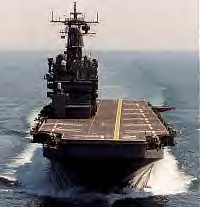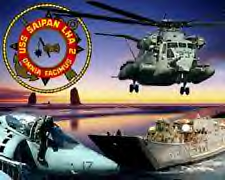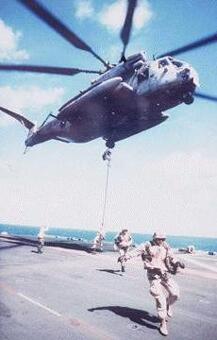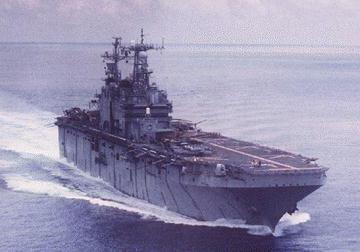


Welcome to the U.S.S. Saipan and AZC(AW/NAC) King's LHA Specific PQS questions and answers.
 This is the website for the 106 section of the LHA EAWS Specific PQS.
All of the questions were answered from instructions and directives found in NAVEDTRA, Personnel Qualification Standard (PQS), Enlisted Aviation Warfare Specialist (EAWS), Unit Specific for LHA.
This is the website for the 106 section of the LHA EAWS Specific PQS.
All of the questions were answered from instructions and directives found in NAVEDTRA, Personnel Qualification Standard (PQS), Enlisted Aviation Warfare Specialist (EAWS), Unit Specific for LHA.
All study information was provided by the EAWS Coordinators and Instructors on board the mighty U.S.S. Saipan.
LAST UPDATED: 14 May 2004

106: WEAPONS FUNDAMENTALS
106.1 State the objective of the Non-Nuclear Ordnance/Explosive Handling Qualification Program.
To improve operational effectiveness of fleet and shore activities through training and compliance with directives, checklists, loading manuals, and NAVAIR/NAVSEA directives.
106.2 Explain the purpose of the following conditions:
Functional characteristics of electrically initiated ordnance cause hazards of HERO. The ordnance electroexplosive devices may be accidentally initiated or their performance degraded by exposure to RF environments.
Ordnance items classified as HERO unsafe are protected from
electromagnetic radiation by putting them in a completely enclosed all-metal container. EMCOM is set to minimize the RF exposure to the ordnance.
106.3 State the purpose of performing a stray voltage check.
Stray voltage checks are performed to prevent the accidental activation of ordnance caused by static electricity.
106.4 Define and discuss the following acronyms:
Air-launched, intercept-aerial, guided missle.
Air-launched, surface-attack, guided missle.
Ship-launched, intercept guided missle.
Air-launched, training guided missle.
Cluster bombs.
106.5 Discuss the following missile guidance terms:
Target illumination is supplied by a component carried in the missile, such as a radar transmitter. The radar signals transmitted from the missile are reflected off the target back to the receiver in the missile.
The missile gets its target illumination from an external source, such as a transmitter carried in the launching aircraft. The receiver in the missile receives the signals reflected off the target, computes the information, and sends electronic commands to the control section.
The directing intelligence is received from the target (i.e. heat from exhaust, radar transmitters, etc.)
106.6 Discuss the purpose of the weapons elevators.
Provides a safe and efficient means for you to handle weapons and weapons components among the magazines and the various assembly, staging, and arming areas within the ship.
106.7 Explain the difference between hung ordnance and unexpended ordnance.
Hung ordnance is that ordnance which accidently remains attached to the aircraft after an attempt to release it from the rack, while unexpended ordnance is that ordnance which has not been fired.
106.8 State the purpose of color coding in regards to ammunition. [ref. a, p. 12-2]
Identifies the use or explosive hazards of the ammunition; however, sometimes it has no meaning.
106.9 Explain the two types of LFORM ammunition: [ref. d, p. 3-26]
a. Class V(A)
Aviation AMMO
b. Class V(W)
Ground AMMO
106.10 Discuss the typical stowage for LFORM ammunition. [ref. c, pp. 2-31 thru 2-43]
LFORM cargo accomodates palletized unit loads and are located on the 2nd platform, holds 4, 5, 9, & 10; and lower holds 4, 5, & 9.
106.11 What is the purpose of the NAVSEA OP 4, Ammunition Afloat. [ref. d, p. 1-1]
Provide guidance to all personnel concerned with ammunition operations of units afloat and to provide a source for a continuing, aggressive accident prevention program within the handling ammunition handling areas.
kimberly.a.king@navy.mil
AZC(AW/NAC) Kimberly King
